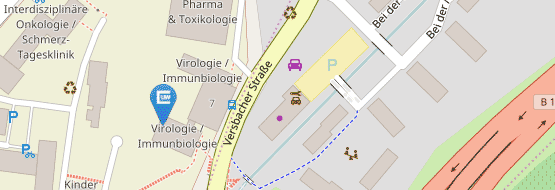Second funding phase
Advanced Concepts of CMV Immune Control
The human cytomegalovirus (HCMV) persistently infects the majority of the world’s population. Its clinical relevance and socioeconomic impact is large, but commonly underappreciated. While HCMV infection of healthy individuals is usually subclinical, life-threatening HCMV disease is frequent among the immunocompromised. In particular, hematopoietic stem cell or solid organ transplant recipients suffer from HCMV-induced pneumonia, colitis, retinitis or graft rejection followed by transplant failure. An even larger social burden stems from congenital HCMV infection due to lifelong health impairments like sensorineural hearing loss. Moreover, HCMV persistence is associated with cardiovascular disease in the elderly and immunosenescence, indicating that insidious HCMV disorders affect a large swath of the general population. While antiviral drugs against HCMV are in clinical use, their benefit is limited by serious adverse effects and the development of drug-resistance. Finally, recent pre-clinical studies provided promising data for both prophylactic and therapeutic CMV-based live attenuated vaccines against other infectious agents (HIV, malaria, tuberculosis) and cancer. While a vaccine against HCMV is still not available, substantial efforts are thus being undertaken to generate and explore an HCMV-based vaccine platform.
CMVs are notorious for their ability to manipulate large parts the host immune system, in particular CD8 T cells as well as NK cells, by multiple hierarchically ordered mechanisms. Moreover, HCMV reprograms CD8 and NK cells by inflating unique immune cell subpopulation with poorly understood functional features. The discovery of hundreds of new and non-conventional CMV gene products by novel high-throughput technologies indicates that viral immune modulation may be substantially more sophisticated than previously thought. At the same time, the respective viral proteins may also represent a large source of hitherto unappreciated peptide antigens for CD8+ T cells. An overarching objective of this RU is to close major gaps of knowledge about the immunological function of CMV gene products and their role in host immune system-pathogen interaction. In particular, the RU aims to understand the molecular interactions of CMV-infected cells (incl. antigen-presenting cells (APCs)) with T and NK cells at molecular, cellular and organism level. Bringing together findings from various experimental systems, we will be able to integrate the steadily growing number of data into comprehensive synopses, allowing to map big pictures of CMV pathogenesis, evasion strategies and immunity. The integration of clinical groups will enable key findings of the RU to immediately impact on the diagnostic procedures, risk stratification and immunotherapies executed at the University Hospitals Würzburg and Freiburg as well as Hannover Medical School (MHH).

